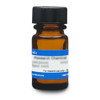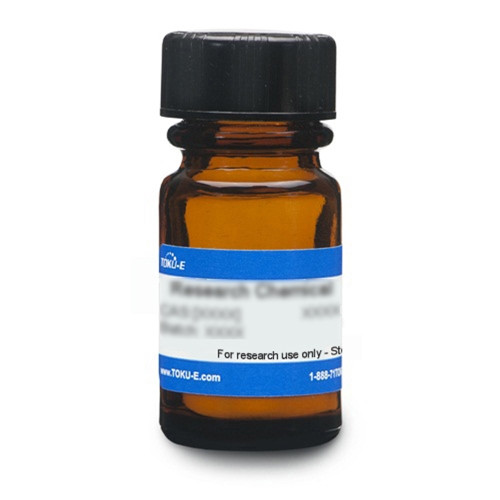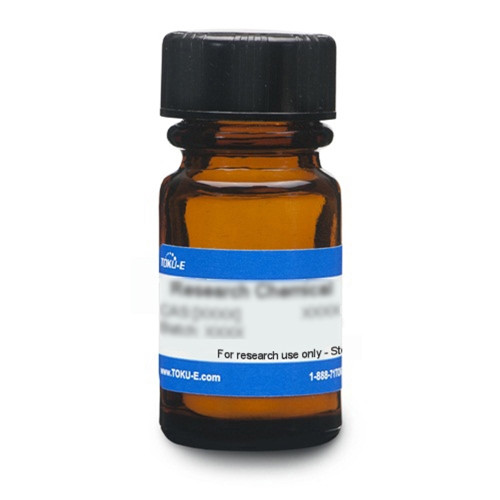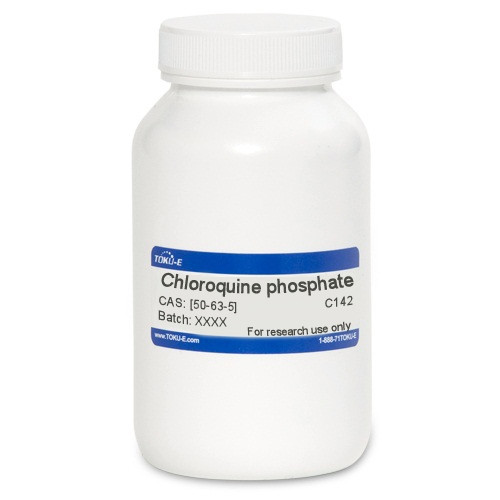Rucaparib phosphate is the phosphate salt of Rucaparib. It is a Poly(ADP-ribose) polymerase (PARP) inhibitor. PARP inhibitors have proven to have anti-cancer activity.
| Mechanism of Action | PARP inhibitors prevent the synthesis of poly-ADP ribose by impinging on the downstream DNA repair processes. |
| Cancer Applications | Mutations in BRCA1 and BRCA2 (BRCA1/2), components of the homologous recombination DNA repair pathway, are associated with hereditary breast and ovarian cancers. The anti-tumor activity of Rucaparib was studied in human cancer cell lines carrying a mutated BRCA1/2. Nine human cell lines were studied in vitro: Nonmutated BRCA1/2 (MCF7, MDA-MB-231, HCC1937-BRCA1 [breast cancer] and OSEC-2 [ovarian surface epithelial], mutated BRCA1 (MDA-MB-436, and HCC1937 [breast cancer], mutated BRCA2 (CAPAN-1 [ pancreatic cancer]), heterozygous for BRCA2 (OSEC-1 [ovarian cancer], epigenetically silenced BRCA1 (UACC3199 [breast cancer], and CHO cell lines (parental AA8, XRCC3 mutated IRS 1SF). Rucaparib induced double-strand breaks in all cell lines (Drew et al, 2011). The effectiveness of Rucaparib can be enhanced with radiation. In the first study with prostate cancer cell lines PC3, LNCaP, DU145, and VCaP, the compound radiosensitized the cells, allowing a low dose of radiation over a longer period to enhance DNA damage. LNCaPa and VCaP showed a maximum sensitivity to the compound, followed by PC3 and C4-2 cells (Chatterjee et al, 2013). In neuroblastoma cell lines (SK-N-BE(2c), the combination of Rucaparib with radiation reduced the X-radiation dose required to achieve 50 % cell kill. It is likely that the mechanism of radiosensitisation entails the accumulation of unrepaired radiation-induced DNA damage. (Nile et al, 2016) |
| Molecular Formula | C19H18FN3O • H3PO4 |
| References | Chatterjee P., et al. (2013) PARP inhibition sensitizes to low dose-rate radiation TMPRSS2-ERG fusion gene-expressing and PTEN-deficient prostate cancer cells. PLoS One 8: e60408 Drew et al (2011) Therapeutic potential of poly(ADP-ribose) polymerase inhibitor AG014699 in human cancers with mutated or methylated BRCA1 or BRCA2. J. Natl. Cancer Inst. 103: 334-346 Nile DL, Rae C, Hyndman IJ, Gaze MN and Mairs RJ (2016) An evaluation in vitro of PARP-1 inhibitors, Rucaparib and Olaparib, as radiosensitisers for the treatment of neuroblastoma. BMC Cancer 16:621 |







